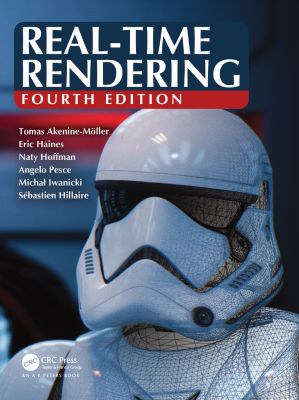










The Graphics Rendering Pipeline
Commercial game engines include: Unity, Unreal engine, and CryEngine, to name a few. Find a overflowing table of engines on Wikipedia.
See our WebGL resources page for various easy-to-use libraries for 3D display on your web browser. Since Javascript is an interpreted language, modifying, running, and sharing demos is ridiculously easy. See the three.js examples page and Lee Stemkoski’s site for a start.
There are a wide range of open source renderers available. NVIDIA’s Falcor gives access to DXR ray tracing capabilities, among many other features. G3D is a research-oriented renderer that offers a wide range of modern effects and works on all major PC operating systems. OpenSWR is a fast pure-CPU OpenGL-compatible renderer from Intel. Irrlicht, bgfx, OGRE, Godot, and sauerbraten are open source 3D games engines with some popularity. Open Scene Graph is a free, open source scene graph system. Coin is an open source retained mode scene graph library based on Open Inventor.
Ancient technologies can be entertaining. Source code for DOOMs and Quakes is available for download under GPL. The ioquake3 site builds upon Quake 3, adding a huge number of improvements (even ray tracing). There are also ports of DOOM to a huge number of platforms, and Wolfenstein is on the iPhone. Arcade emulators such as MAME allow you to port classic games to most any platform.
